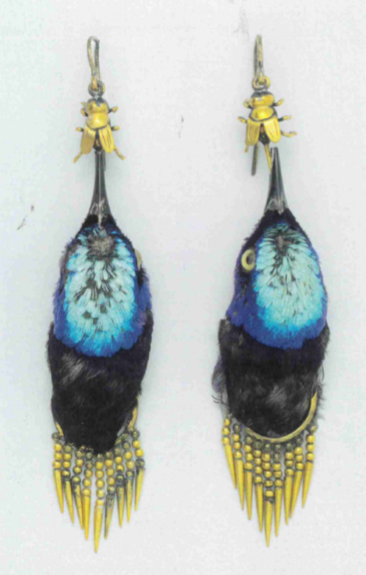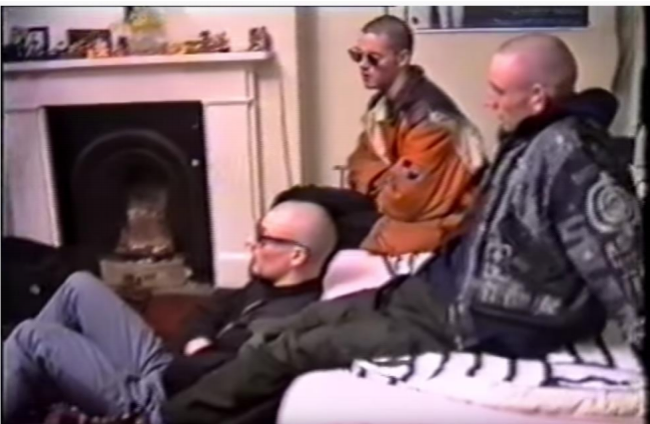After Charles Darwin's book On the Origin of the Species was published in 1859, there emerged an exciting new trend among fashionable society to discover the natural world. This was mainly achieved through gathering and collecting natural materials, and by finding ways to get closer to nature. As science historian Camilo Quintero Toro notes, this mania ranged ‘from home decorating to cabinets of curiosities, to private natural history collections, nature became part of the culture of consumption and trade that occupied the life of European elites’ (Toro, 2012, p. 20). Much of this ‘culture of consumption’ was concerned with using natural materials to decorate clothing, and to translate nature through textiles for the home and for dress.
In A Brief History of Globalization, Peter Vanham suggests that ‘by the end of the 18th Century, Great Britain had started to dominate the world’ (Vanham, 2019). This project of colonisation resulted in an expanded range of imported goods to Britain that became available through trade. In combination with the advancement of steam, goods could be shipped much faster from many countries back to the Britain. In terms of fashion and nature, this meant that many more exotic, natural goods could be employed within the design and decoration of clothing.
Figure 1 shows a dress from 1868-69, made from muslin and embroidered with 5,000 Jewel Beetle wing cases. The colour and shine of the wings made this dress a symbol of high status. Those who were unable to afford expensive gems, such as sapphires and emeralds, could achieve the same costly appearance with cheaper, but unusual, animal-derived products. The insect decoration was an innovative addition to 19th Century dress, as the wings:
were traditionally used to embellish textiles in South America and Southeast Asia…[and] became a symbol of high status in India during the Mughal period (1526-1756). Western traders in India then introduced these textiles to Europe in the late eighteenth and early nineteenth centuries (Victoria and Albert Museum, 2017).

In addition to the use of insects used to decorate fashionable dress, other animal-derived materials were also employed by the fashionable elite. Quintero Toro explains that in the 19th Century, there was ‘a popularity in the use of exotic birds. They became more than specimens in natural history museums and found their way onto hats and heads of upper-class women throughout Europe and the United States’ (2012, p. 21). Hats in particular took on increased importance, as they ‘were essential year-round accessories for respectable women. But they were more social conventions and decorative accoutrements than practical sources of warmth or protection from the elements’ (Chrisman-Campbell, 2018, p. 47). Furthermore, as Robin Doughty notes ‘if the plumes were costly looking, then ladies demanded them by the crateload’ (1975, p. 15). The use of exotic feathers in hats helped to define social class amongst women in Britain. For those who couldn’t afford exotic birds, ‘milliners found creative ways to lend exoticism to non-endangered farm fowl like ducks… or create artificial exotic “birds” out of commonplace feathers and glue’ (Chrisman-Campbell, 2018, p. 51).
The enormous number of birds that were hunted for this trend brought numerous species near to complete extinction. This was exacerbated due to the fact that many birds were hunted for their bold-coloured plumage during mating season, resulting in severe avian population decline. Many women who wore these feathers as part of their fashionable dress did not necessarily recognise the cruelty and impact of their fashion accessories on bird species around the world. They were far more concerned with image and status.
As a result of decreasing bird numbers, The Royal Society for the Protection of Birds (RSPB) was established in 1889, in order to help reclaim the number of birds affected by the plumage trade. Figure 2 shows a pair of earrings made with the heads of the red-legged Honeycreeper, commonly found in Central and Northern South America. These were amongst the many birds which were hunted perilously close to extinction during the 19th Century to satisfy fashionable demand.

In addition to bird feathers on hats, by the late 19th and early 20th Century, large insects, as well as smaller lizards and mammals, became fashionable accessories; often attached to the owner by a collar or decorated chain, to stop them from escaping. These creatures, explains Julia Long, occupied an unusual, hybridised territory: they were ‘were simultaneously ornamentation and pets, appreciated for their natural beauty as well as their novelty’ (Long, 2009, p. 112). Figure 3 is evidence of this development, where the photograph shows a woman from the 1930s holding a chameleon, looking at it in awe and love.
“Many women who wore these feathers as part of their fashionable dress did not necessarily recognise the cruelty and impact of their fashion accessories on bird species around the world. They were far more concerned with image and status.”

As well as small creatures attached to the wearer, ‘larger animals could also be considered fashionable accessories of the time…miniature dogs, cats, and monkeys, all of which were small enough to be carried’ (Long, 2009, p. 113). Whilst seeing a monkey as a pet today in 2020 would be unusual, miniature dogs such as the Chihuahua are still worn or carried in designer handbags by fashionable women. Over time, society has accepted dogs as good pets. When we become accustomed to something, we don’t question it, because we think it's normal.
From the 19th Century onwards, many women not only admired the beauty of living animals as pets and accessories, but also enjoyed their beauty after death, through the increasing popularity of taxidermy:
The role of pets at the time is complex and multi-layered, as women draped themselves in live and stuffed animals…If the animals were alive, they were served equally as friends and adornment…If they were dead, they were given the illusion of life through…taxidermy (Long, 2009, p. 109).
“From the 19th Century onwards, many women not only admired the beauty of living animals as pets and accessories, but also enjoyed their beauty after death, through the increasing popularity of taxidermy”
In addition to this apparently feminine appetite for taxidermy animals, hunting was a popular masculine hobby. Men during this period had a different relationship with animals specifically in relation to hunting, where kills would be displayed like trophies in the home.
In conclusion, people during the 19th and early 20th Centuries admired nature and wanted to make use of its materials to signify their class, status, and fashionability. However, this popularity had a negative impact, the effects of which we are still seeing in the natural and animal world today.
Bibliography
- Chrisman-Campbell, K (2018) ‘Fowl intentions: Fashion, activism, conservation’, Ornament, 40 (4).
- Doughty, R. W (1975) Feather Fashions and Bird Preservation: A Study in Nature Protection. London: University of California Press Ltd.
- Ehrman, E (2018) Fashioned from Nature. London: V&A Publishing.
- Long, J (2009) ‘Portable pets: Live and apparently live animals in fashion, 1880-1925’, Costume, 43, pp. 109-126.
- Toro, Quintero, C. (2012) Birds of Empire, Birds of Nation: A History of Science, Economy, and Conservation in United States-Colombian Relations. Colombia: Universidad de los Andes.
- Vanham, P (2019) A Brief History of Globalization. Available here. (Accessed: 9 February 2020).
- Victoria and Albert Museum (2017) Dress. Available here.

 All I want is...
All I want is...

